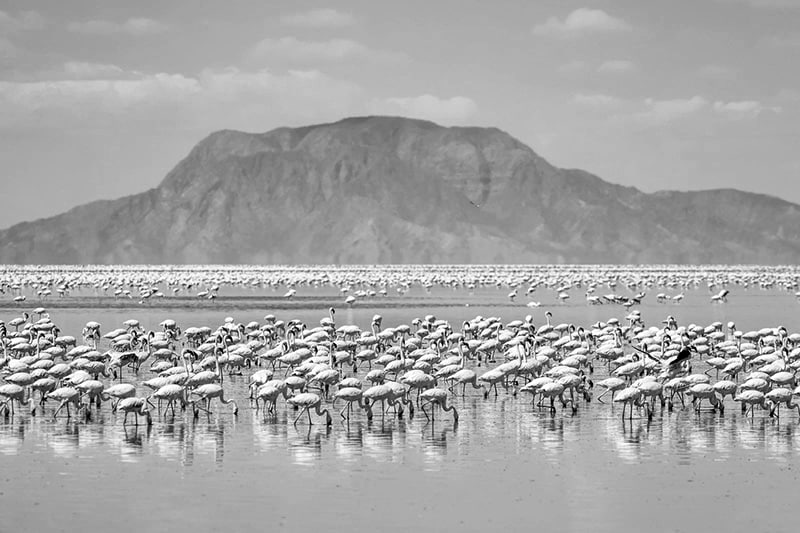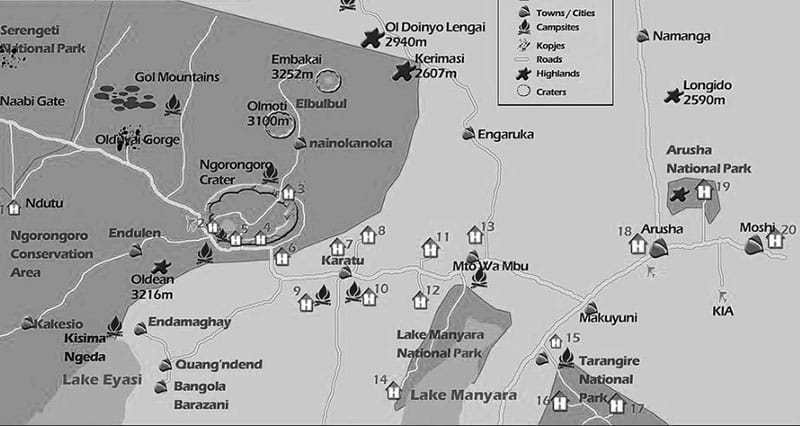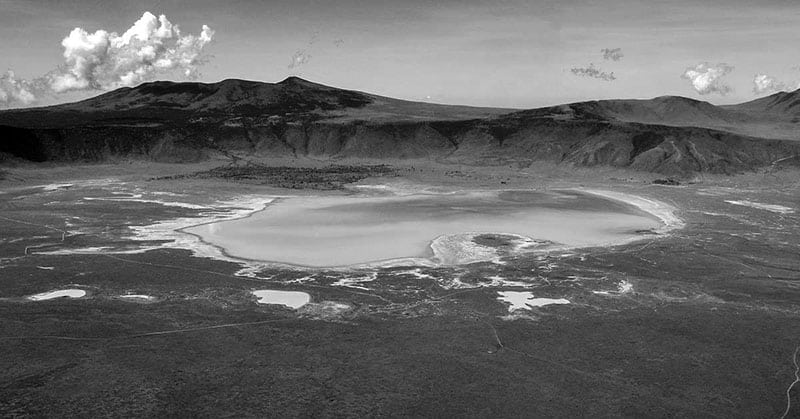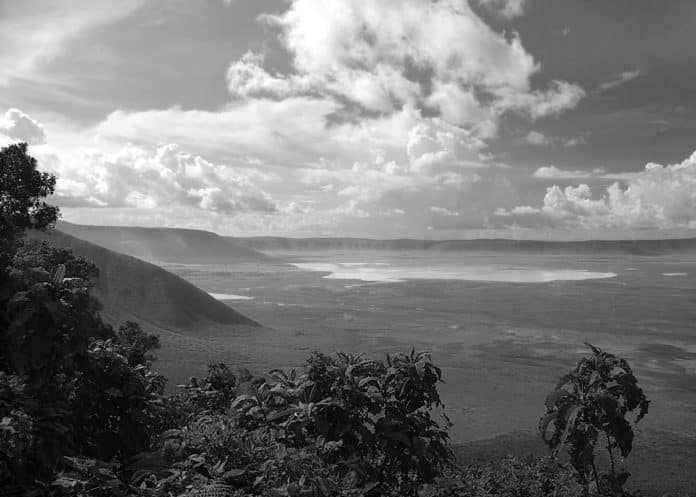Ngorongoro Crater Highlands – History, Safari, Flamingos and More
A Quick Overview of Ngorongoro Crater Highlands
Wildlife and ecological diversity abound in the vast Ngorongoro Crater highlands. Maasai tribespeople reside in traditional huts, hamlets, and bomas with their cattle, definitely not a national park. This locality has been occupied since prehistoric times, as evidenced by its archaeological sites.
Ngorongoro Crater Highlands Features
The Ngorongoro Crater Highlands destinations are sure to leave a lasting impression on anyone who visits them.
Trekking Safaris for the Most Adventurous
Daredevil hikers looking for a once-in-a-lifetime experience amid Maasai land should consider the Ngorongoro Crater highlands safari. Explore Maasai environs and residences, where you’ll learn about their traditions and customs as well as their unique way of life. In addition to the abundance of wildlife, Ngorongoro Crater Highlands is home to a plethora of vegetation and water sources.
Its Large Number of Flamingos
Flamingos in Lake Natron can astonish even the adventurous fanatics. Embakai crater is home to a wide variety of wildlife, including buffalo, Impala, and Thompson’s Gazelle, as well as a variety of birds; the only thing to regret here is not having a spacious memory card that’s guaranteed.
You won’t have to deal with the same level of exertion as climbing Kilimanjaro or Mount Meru because the Ngorongoro Crater Highlands journey isn’t quite as strenuous. Ol Donyo Lengai, the sacred peak of the Maasai people, is dubbed “The Mountain of God.” You can peruse there; only a tiny daypack is needed. Others will be carried by porters and donkeys for you, so you don’t have to worry about your belongings.

Wind up the safari at night with treks up Ol Donyo Lengai, the sacred mountain, to catch a breathtaking sunrise over Kilimanjaro from the peak. Most of the safari will be spent on foot; however, some driving will be involved. In other words, five days is not enough time to travel such a distance. To ensure your safety, your vehicle will be with you at all times. We must be able to get you to the hospital quickly if you or a member of your party becomes ill.
History of the Ngorongoro Crater
The Ngorongoro Crater formed millions of years ago due to volcanic activity. The Great Rift Valley and other soda lakes were also formed due to this activity in northern Tanzania. There are many volcanic products in this area that may be seen. There are three higher mountains in the Ngorongoro Crater Highlands that span a larger area, but the Ngorongoro Crater Highlands have a more diverse ecosystem.
Maasai tribe people live in the Ngorongoro Crater Highlands in traditional huts and bomas with their cattle, making it not a national park. This locality has been occupied since prehistoric times, as evidenced by archaeological sites. Dr. Lois and Mary Leakey documented skulls of “Handy Man” or Homo Habilis and “Nutcracker Man” or Australopithecus Boisei that lived here.
Ngorongoro Crater Weather
The weather in the Ngorongoro Crater is generally mild and temperate throughout the year due to its high altitude. However, it can get chilly in the mornings and evenings, so it’s advisable to pack layers to accommodate temperature changes during the day.
Best Time to Go to Ngorongoro Crater
The best time of year to visit Ngorongoro crater is during the dry season, which typically runs from June to October.
This is the best time to visit Ngorongoro crater because it offers excellent wildlife viewing opportunities as animals gather around the available water sources in the crater. Additionally, the months of January and February, during the short dry season, can also be a good time to visit with fewer crowds.

Animals in the Ngorongoro Crater
The crater’s unique ecosystem supports a wide range of Ngorongoro crater animals, including the “Big Five” (elephant, lion, leopard, buffalo, and rhinoceros). Other notable animals Ngorongoro crater include zebras, wildebeests, hyenas, cheetahs, hippos, giraffes, warthogs, and various antelope species such as eland and gazelles. The dense concentration of wildlife in the crater provides excellent opportunities for wildlife viewing and photography. Additionally, the crater is also a paradise for bird enthusiasts, with over 500 bird species recorded in the area.
Black Rhino Ngorongoro Crater
The black rhinoceros (Diceros bicornis) is one of the iconic species found in the Ngorongoro Crater. This critically endangered mammal is characterized by its prehensile upper lip, which it uses to browse on leaves and twigs. The Ngorongoro Crater is one of the few remaining habitats in Tanzania where the black rhino can still be found, and it serves as an important sanctuary for their conservation.
Birds of Ngorongoro Crater
The Ngorongoro Crater is a haven for birdwatchers, boasting over 500 bird species that inhabit its diverse habitats. Here are some notable birds you can encounter in the crater:
Ngorongoro Crater Facts
Here are some fun facts about the Tanzania crater Ngorongoro:
- The Tanzania Ngorongoro crater is a volcanic caldera, formed by the collapse of a massive volcano millions of years ago.
- It is located in northern Tanzania and is part of the larger Ngorongoro Conservation Area, which spans over 8,000 square kilometers (3,100 square miles).
- The crater is home to a remarkable concentration of wildlife, including the “Big Five” (elephant, lion, leopard, buffalo, and rhinoceros).
- With an average depth of 600 meters (2,000 feet), the Ngorongoro Crater is one of the largest intact calderas in the world and a UNESCO World Heritage Site.
Best Place to Stay Ngorongoro Crater
There are multiple Ngorongoro crater lodge and hotel options. When visiting the Ngorongoro crater in Tanzania, make sure to stay at one of these accommodations.
Best Hotels Ngorongoro Crater & Best Lodges in Ngorongoro Crater
Here’s a short list of Ngorongoro crater hotels and the best Ngorongoro crater lodges:
- andbeyond Ngorongoro crater lodge
- &beyond Ngorongoro crater lodge
- Ngorongoro crater lodge Tanzania
- Ngorongoro crater Serena lodge
- Beyond Ngorongoro crater lodge
- Rhino lodge Ngorongoro crater
- andbeyond Ngorongoro crater lodge Ngorongoro conservation area Tanzania
Ngorongoro Crater Camps and Safaris
- Sanctuary Ngorongoro crater camp
- Ngorongoro crater safari
- Sanctuary Ngorongoro crater camp Tanzania
- Ngorongoro crater camp
- African safari Ngorongoro crater
Other Resources
- Ngorongoro crater lodge price
- Ngorongoro crater national park
- Airport near Ngorongoro crater
- Arusha airport to Ngorongoro crater
- Arusha to Ngorongoro crater

FAQs
What is the Ngorongoro crater?
The Ngorongoro crater Tanzania is a large volcanic caldera located in northern Tanzania, Africa. It is part of the Ngorongoro Conservation Area, which is a UNESCO World Heritage Site and one of the most popular tourist destinations in Tanzania.
How deep is the Ngorongoro crater?
The depth of the Ngorongoro Crater varies in different areas, but on average, it is around 600 meters (2,000 feet) deep.
How was the Ngorongoro crater created?
The formation of the Ngorongoro Crater can be traced back millions of years to volcanic activity. The process began with the eruption of a massive volcano, estimated to have been higher than Mount Kilimanjaro, which occurred around 2 to 3 million years ago.
What is the altitude of Ngorongoro crater?
The altitude Ngorongoro crater Tanzania ranges from approximately 1,800 meters (5,900 feet) to 1,600 meters (5,200 feet) above sea level.
What’s the closest airport to Ngorongoro crater?
The closest airport to the Ngorongoro Crater is the Kilimanjaro International Airport (JRO) located near Arusha, Tanzania.
What’s the best lodge Ngorongoro crater?
The best lodge is andbeyond ngorongoro crater lodge tanzania. The andbeyond ngorongoro crater is a renowned luxury safari lodge located on the rim of the Ngorongoro Crater, offering breathtaking views and exclusive wildlife experiences in one of Africa’s most iconic destinations.
Check out the andbeyond Ngorongoro crater lodge rates!
For more articles related to Things to Do in Tanzania (Zanzibar), click here!


































